|
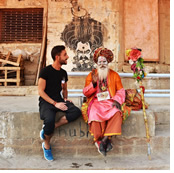 A Gay Travel India Cultural Tour. From Delhi, the Taj Mahal & the cities of the Raj, we’ll focus on the art, architecture & history of this fascinating, sometimes contradictory land. This gay India tour has an abundance of famous temples, palaces, and forts. Take a leisurely pace, and relax in five-star luxury. Our classic gay India tour begins in Delhi as we are swept away to another time and another place. A Gay Travel India Cultural Tour. From Delhi, the Taj Mahal & the cities of the Raj, we’ll focus on the art, architecture & history of this fascinating, sometimes contradictory land. This gay India tour has an abundance of famous temples, palaces, and forts. Take a leisurely pace, and relax in five-star luxury. Our classic gay India tour begins in Delhi as we are swept away to another time and another place.
Dotted with hundreds of landmarks, India’s modern capital, Delhi, is also a very ancient city whose architectural gems transcend time. We next tour the amazing palaces of Khajuraho and Jaipur, where royalty was carried on the backs of elephants. In Jaipur we will visit a local family to celebrate the Holi Festival – India’s most colorful event of the year!
A gay India tour can’t miss the famous icon of Agra, the Taj Mahal – one of the New 7 Wonders of the World. Our dawn visit will offer the least crowds and the most incredible colors as the sun slowly rises over the polished white dome and minarets.
We conclude our journey in the vibrant commercial capital of Mumbai (Bombay). Along with seeing monuments such as the Gateway of India, we will spend a day exploring the gay history of this city that some Indians call Bomgay.
For those with enough time, we offer a pre tour to Kathmandu, Nepal with views of the snow-covered peaks of the Himalayas. There is also a post tour extension to the Hindi center of Varanasi on the Ganges River.

• Explore Delhi with its vast and rich history.
• Watch sunrise illuminate the Taj Mahal.
• See the dreamy "pink city" of Jaipur and its famous seven gates.
• Visit the 1500 year old Khajuraho temples.
• Relax after a day of touring at sumptuous five-star hotels.
• See Mughal history come alive before your eyes.
• Glimpse the daily lives of a variety of Indians during exclusive village and family visits.
• Discover India, a land of overwhelming sensations
• Enjoy a post-tour extension to the ancient Hindu center of Varanasi (March 07 to 10, 2026).
• Experience Kathmandu and fly by Mount Everest on our Nepal pre-tour extension (February 21 to 24, 2026).
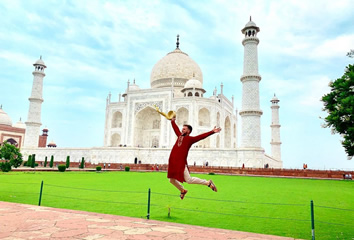
Day 1 -
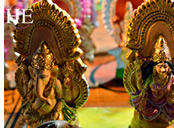 Upon arrival in Delhi, a guide will meet you at the airport, and escort you to our elegant hotel. Upon arrival in Delhi, a guide will meet you at the airport, and escort you to our elegant hotel. There are no activities or meals planned for today. You can rest in your sumptuous quarters, take a walk to shake off the jet lag, hit the pool, or relax and rest for our gay India tour.
Day 2 -
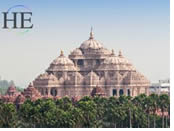 Today we will explore Delhi! India’s capital and a major gateway into the country, contemporary Delhi is truly a cosmopolitan city that juxtaposes modern and traditional with a graciousness that is her very own unique heritage. Today we will explore Delhi! India’s capital and a major gateway into the country, contemporary Delhi is truly a cosmopolitan city that juxtaposes modern and traditional with a graciousness that is her very own unique heritage.
We will explore the fascinating and sometimes fast-paced city of Delhi, starting with a visit to Akshardham Temple. Akshardham or Swaminarayan Akshardham, is known as the world’s largest comprehensive Hindu temple, displays the soul of Indian culture, civilization, traditions, and spirituality. The Akshardham experience is an enlightening journey through India’s glorious art, values, and contributions to the progress, happiness, and harmony of mankind. The rest of the day will be yours to explore or relax.
Tonight we will enjoy our welcome dinner.
Day 3 -
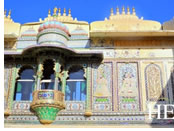 Today begins with a full-day tour of Old and New Delhi. We will start with a visit to the Jama Masjid, one of Asia’s largest mosques. It was built in red sandstone and marble by more than 5000 artisans. Today begins with a full-day tour of Old and New Delhi. We will start with a visit to the Jama Masjid, one of Asia’s largest mosques. It was built in red sandstone and marble by more than 5000 artisans. Next, we will visit Chandni Chowk, Asia’s largest wholesale market, a massive area packed with shops, bazaars, and people. We will get a view of the Red Fort, a UNESCO World Heritage Site. It is a massive structure built with red sandstone and a magnificent symbol of Mughal elegance and design. We won’t forget about checking out the Raj Ghat, a simple memorial to Mahatma Gandhi.
Then we’ll head towards New Delhi, which reflects the legacy the British left behind. We’ll visit the 16th century Humayun’s Tomb, the first garden-tomb on the Indian subcontinent, an outstanding monument in the Indo-Persian style, and a precursor of the Taj Mahal. The tour to Imperial Delhi will also include a drive past India Gate, the 42 m high War Memorial Arch, the Parliament House, the Secretariat buildings and the Vice Regal Palace, now the official residence of the President of India.
Day 4 -
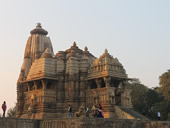 Today we will explore Khajuraho and it’s 1,500-year-old Khajuraho temples. We will also spent time at the amazing Panna National Park, offering a blend of architecture, spirituality, and wildlife. Today we will explore Khajuraho and it’s 1,500-year-old Khajuraho temples. We will also spent time at the amazing Panna National Park, offering a blend of architecture, spirituality, and wildlife.
The temples at Khajuraho were built during the Chandella dynasty, which reached its apogee between 950 and 1050. Only about 20 temples remain; they fall into three distinct groups and belong to two different religions – Hinduism and Jainism. They strike a perfect balance between architecture and sculpture. The Temple of Kandariya is decorated with a profusion of sculptures that are among the greatest masterpieces of Indian art.
Day 5 -
 Covering an area of approx 542.67 sq km, the Panna National Park not only lets the tourists come across the rich wildlife and nature but also numerous sites that hold historical importance. In the sense of visiting the park, tourists get the opportunity to witness the stone paintings that date back to the Neolithic era. Declared as a wildlife sanctuary in the year 1981, the national park offers the tourists a number of things to do that makes holidays in the Panna National Park a memorable one. Covering an area of approx 542.67 sq km, the Panna National Park not only lets the tourists come across the rich wildlife and nature but also numerous sites that hold historical importance. In the sense of visiting the park, tourists get the opportunity to witness the stone paintings that date back to the Neolithic era. Declared as a wildlife sanctuary in the year 1981, the national park offers the tourists a number of things to do that makes holidays in the Panna National Park a memorable one.
Tourists will get the opportunity to indulge in the Jungle Safari that lets one experience the dense ambience and encounter the wildest ranges of mammals, reptiles, birds, flora, fauna and avifauna. Other than this, tourists will even be able to get the chance to take the Tiger Safari which will let one spot the tiger species at close quarters.
Day 6 -
 We will awaken early this morning for a sunrise visit to the Taj Mahal, so we can personally witness the changing hues reflecting the gradually brighter sunlight. This mythic structure with its history of romance and survival from the ravages of various marauders threatens to underwhelm visitors who have lived in the shadow of its hype. But its symmetry, its purity, its whiteness, the elegance of its curves, and the majesty of its size and silhouette can still surprise and astound visitors. It is easy to understand why it was selected as one of the New Seven Wonders of the World. We will awaken early this morning for a sunrise visit to the Taj Mahal, so we can personally witness the changing hues reflecting the gradually brighter sunlight. This mythic structure with its history of romance and survival from the ravages of various marauders threatens to underwhelm visitors who have lived in the shadow of its hype. But its symmetry, its purity, its whiteness, the elegance of its curves, and the majesty of its size and silhouette can still surprise and astound visitors. It is easy to understand why it was selected as one of the New Seven Wonders of the World.
Later in the day, we will also visit the Agra Fort, which evolved during the reigns of three Mughal Emperors. Here we can witness the contrast of the stern red sandstone citadel raised by Akbar with the lavishly beautiful shimmering white palaces built by Shah Jahan. We will also visit Itmad-Ud-Daulah, a 17th-century Mughal mausoleum. The Tomb of I’timad-Ud-Daulah is also known as Baby Taj and often regarded as a draft of the Taj Mahal. It is the first tomb in India that is entirely made out of marble. Along with the main building, the structure consists of numerous outbuildings and beautiful gardens.
Day 7 -
 This morning we will take a flight and arrive in the colorful city of Jaipur. Jaipur is called the Pink City because most of its buildings are of sandstone. It was chosen by Maharaja Sawai Jai Singh II (1693-1743) for its capital, and it is still the vibrant capital of the desert state of Rajasthan. Surrounded on all sides by rugged hills, crowned with forts and enclosed by embattled walls, Jaipur is a must-see for travelers to India. This morning we will take a flight and arrive in the colorful city of Jaipur. Jaipur is called the Pink City because most of its buildings are of sandstone. It was chosen by Maharaja Sawai Jai Singh II (1693-1743) for its capital, and it is still the vibrant capital of the desert state of Rajasthan. Surrounded on all sides by rugged hills, crowned with forts and enclosed by embattled walls, Jaipur is a must-see for travelers to India.
The Old City, the actual Pink City, is a great place to wander around. Maharaja Man Singh II had the whole city painted pink when the Prince of Wales, later Edward VII, visited Jaipur in 1876. Today, every home within the old city is obliged by law to maintain this facade. Fabulous, tall houses with latticed windows line the narrow streets of the old city, their rose-pink color lending enchantment to a scene that is almost magical at sunset.
We will visit the Maharaja’s walled City Palace (1732 AD), which occupies one-seventh of the city’s area. Our next stop is the observatory of Jantar Mantar, which literally means “instruments for measuring the harmony of the heavens,” and are the oldest astronomical instruments in India. Each has a specific purpose and still gives an accurate reading. We finish our tour with our guide leading us through lively city markets, including the Johari Bazaar.
Day 8 -
 After breakfast, we will take a day trip through the countryside north of Jaipur to visit the Amber Fort (also called Amer Fort), which was the ancient capital of the state until 1728. With its honey-colored fortress-palace in the Aravalli Hills which can be reached by an elephant, Amber Fort has been described as the sleeping beauty of Rajasthan. The somber exterior belies the richness of the royal apartments, which open on to striking views of a gorge. After breakfast, we will take a day trip through the countryside north of Jaipur to visit the Amber Fort (also called Amer Fort), which was the ancient capital of the state until 1728. With its honey-colored fortress-palace in the Aravalli Hills which can be reached by an elephant, Amber Fort has been described as the sleeping beauty of Rajasthan. The somber exterior belies the richness of the royal apartments, which open on to striking views of a gorge.
This afternoon, we’ll return to the serene hills near Amber Fort for a special treat – an elephant safari! We’ll start with a welcome drink for us, and food for the elephants, then one or two of us will climb onto each elephant. We will slowly follow a picturesque route with a local tribal guide, passing by villages, fields, the medieval fortress, and monuments, until we reach our camp in the middle of the forest. The birdlife in the forests is thriving and leopards inhabit the jungles as well as hyena and the wolf has been sighted along with antelopes and jackals.
Day 9 -
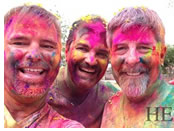 We have timed our tour so that we may celebrate the Holi Festival of Colors in Jaipur. We have timed our tour so that we may celebrate the Holi Festival of Colors in Jaipur. Holi is considered to be the day of friendship when in keeping with the spirit of the day, people forget petty enmities and renew their friendship. It’s also the day when people toss powder of various bright colors on their friends to celebrate the day. We will have the honor of enjoying the festivities with a local family.
Day 10 -
 After a leisurely breakfast, we will be taken on a specially curated full-day "Queer Tour". Queer’s Day Out is a unique experience – which includes a full day of flirting with various aspects that frame Queer lives of persons in the city. It will start with the question ‘What makes Bombay Queer?’ and will involve journeys to various spots across South Bombay to find the answer, while experiencing the dynamic Queer culture of Bombay. Or as Queer folk here call it—Bomgay! After a leisurely breakfast, we will be taken on a specially curated full-day "Queer Tour". Queer’s Day Out is a unique experience – which includes a full day of flirting with various aspects that frame Queer lives of persons in the city. It will start with the question ‘What makes Bombay Queer?’ and will involve journeys to various spots across South Bombay to find the answer, while experiencing the dynamic Queer culture of Bombay. Or as Queer folk here call it—Bomgay!
Mumbai was bought by Catherine of Braganza of Portugal as dowry to her marriage with Charles II of England. Mumbai is India’s most vibrant city, the largest port, and the hub of trade and finance. The ebullience of her spirit, captured by the throbbing beat of Bollywood, draws millions here to realize their dream. The seven islands that came to constitute Mumbai were home to communities of fishing colonies.
Day 11 -
 This morning we will enjoy a city tour of the gateway to India. This morning we will enjoy a city tour of the gateway to India. We will proceed to the Prince of Wales Museum – gothic and Moorish architecture in a striking confluence of styles that came to be known as Indo Saracenic. It boasts of a significant collection of Indus valley artifacts some of them dating back to more than 5000 years. Most impressive are the miniature paintings – nearly 2000 of them – from various stylistic schools of India.
Day 12 -
Today we will say our goodbyes. Enjoy breakfast and your transfer to the airport home or onto our extensions.
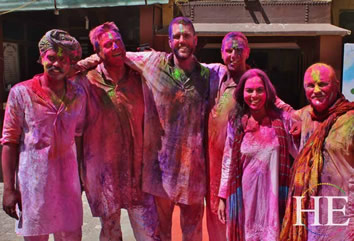
For those participants who have a little more time to spend in India after the main tour, we are offering a three-night extension in Varanasi.
Varanasi (once called Benares) is visited daily by thousands of Hindi pilgrims who come to bathe in the sacred Ganges River. During our tour, we will see many of the ghats (bathing sites) from both the shore and from a boat, and we will also visit nearby Sarnath, where Siddharth Gautama, the original Buddha, gave his first sermon.
Days 12 - 13 -
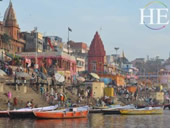 Varanasi (formerly called Benares) is situated on the banks of the holy Ganges River and is presided over by Lord Shiva. It is called the Eternal City and is distinguished by the many “ghats” along the riverside. (A ghat is a broad flight of steps that provides access to the water, especially for bathing). Varanasi (formerly called Benares) is situated on the banks of the holy Ganges River and is presided over by Lord Shiva. It is called the Eternal City and is distinguished by the many “ghats” along the riverside. (A ghat is a broad flight of steps that provides access to the water, especially for bathing). From time immemorial Varanasi has been a seat of learning and an important religious center for Hindus. It is also one of the most sacred places of pilgrimage, being visited by millions of people every year. In addition to its role in Hinduism, Varanasi also holds an important place in Buddhism, since Buddha’s first sermon was given nearby.
Day 14 -
On our last day, you will be transferred to the airport for your flight back to Delhi for an overnight stay in Delhi, near the airport. The flights from Delhi to Varanasi and back to Delhi are included in the tour price.
For those flying out the following day or later, please let us know if you would like to add additional hotel nights.
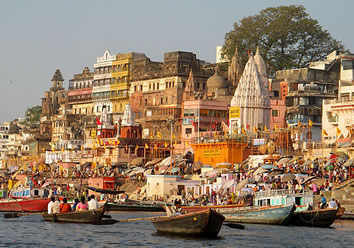
For those able to arrive earlier, we are also offering a 3-night extension to Kathmandu, Nepal.
 Day 01 - Day 01 -
Your flight from Kathmandu to Mumbai is included in the tour price. (Since there are many flights from Kathmandu to destinations other than India, the flight to Kathmandu will be on your own.)
Arrival into Kathmandu. We will transfer to our deluxe hotel in this picturesque city, where you will have the evening to relax and recover from your long journey.
Day 02 -
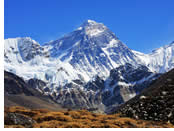 Early risers may enjoy an optional dawn flight tour of Mount Everest (weather permitting). We will see some of the world’s highest peaks, and glimpse the Roof of the World, the Tibetan Plateau. Early risers may enjoy an optional dawn flight tour of Mount Everest (weather permitting). We will see some of the world’s highest peaks, and glimpse the Roof of the World, the Tibetan Plateau. After returning to our hotel for breakfast, we will then tour Kathmandu. We will explore the riches of the Hindu and Buddhist traditions of this historic capital and its surrounding region.
Enjoy a rickshaw ride past ancient temples and traditional markets. Our senses will be delighted by the exotic sights and sounds. We will see the Buddhist shrine of Swyambhunath Stupa, the Royal Palace, and Patan, with its Golden Gate and Temple of Taleju.
Day 03 -
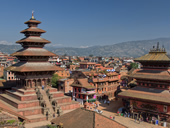 Today we drive 10 miles east to visit the elegant city of Bhaktapur. Renowned for its Durbar Square of magnificent temples, sculptures, and palaces. Today we drive 10 miles east to visit the elegant city of Bhaktapur. Renowned for its Durbar Square of magnificent temples, sculptures, and palaces.
The National Art Gallery is housed within the Palace of 55 Windows. We will also see Tamaudhi Square with its five-roofed Nyatoapola temple and Dattatreya Square. Continue on to the mile-high town of Dhulikhel, which offers one of the best vantage points in the region for seeing the Himalaya range.
Day 04 -
In the morning, subject to weather conditions, you’ll be awakened early to watch from our hotel as the sunrise slowly illuminates the nearby mountain peaks.
We’ll be transferred to the Kathmandu airport for flight to Mumbai (this flight included in price).

|